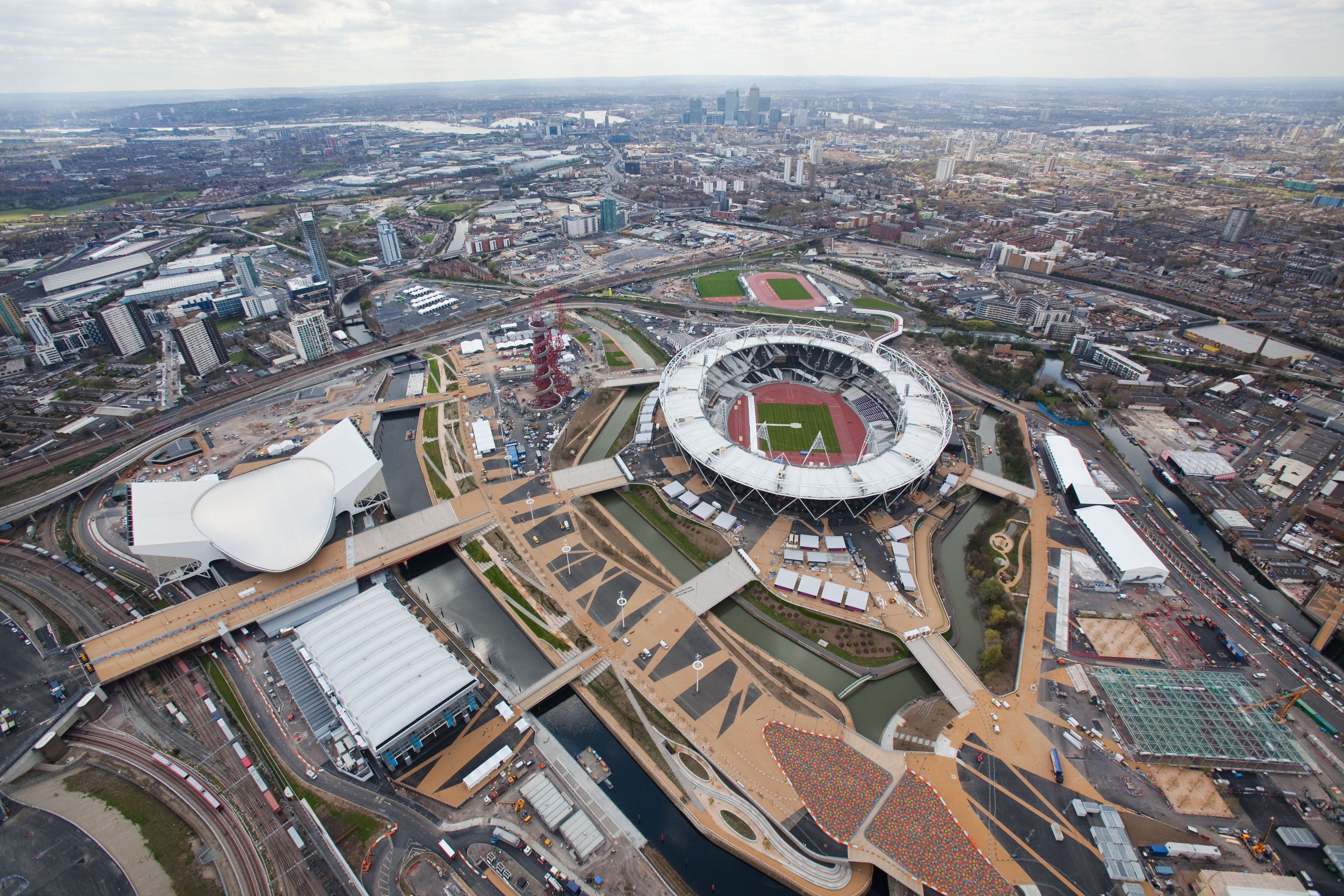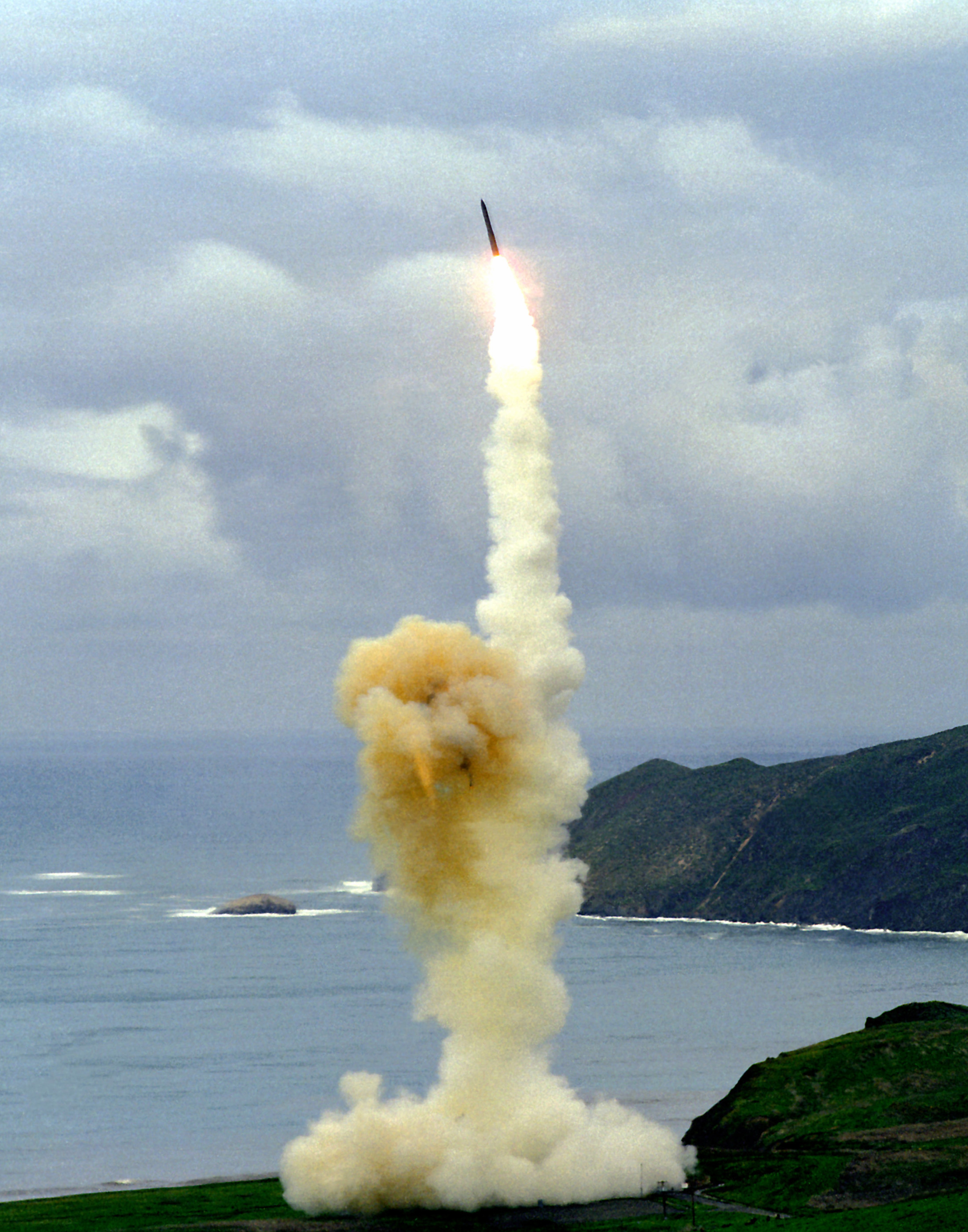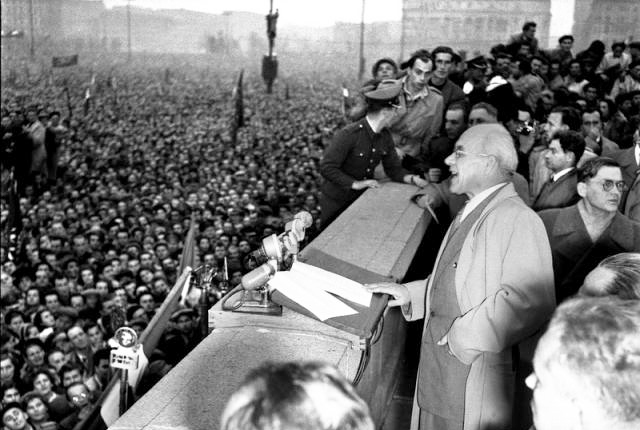|
5th World Festival Of Youth And Students
The 5th World Festival of Youth and Students (WFYS) was held from 31 July to 15 August 1955 in Warsaw, capital city of the then Polish People's Republic. The World Federation of Democratic Youth organized this festival during the rise of the peaceful coexistence concept introduced by Nikita Khrushchev among the socialist bloc. At the end of the 1950s, the colonialism was in its last years, and in the same year, the Bandung Conference was held. The conference strongly criticized the western powers for keeping their colonial possessions. The need for a struggle against the danger of nuclear annihilation and for the end of colonialism dominated the festival. More than 30,000 young people from 114 countries participated in this edition of the festival. The motto of the festival was ''For Peace and Friendship – Against the Aggressive Imperialist Pacts''. The festival's sports programme featured an athletics competition. [...More Info...] [...Related Items...] OR: [Wikipedia] [Google] [Baidu] |
Warsaw
Warsaw ( pl, Warszawa, ), officially the Capital City of Warsaw,, abbreviation: ''m.st. Warszawa'' is the capital and largest city of Poland. The metropolis stands on the River Vistula in east-central Poland, and its population is officially estimated at 1.86 million residents within a greater metropolitan area of 3.1 million residents, which makes Warsaw the 7th most-populous city in the European Union. The city area measures and comprises 18 districts, while the metropolitan area covers . Warsaw is an Alpha global city, a major cultural, political and economic hub, and the country's seat of government. Warsaw traces its origins to a small fishing town in Masovia. The city rose to prominence in the late 16th century, when Sigismund III decided to move the Polish capital and his royal court from Kraków. Warsaw served as the de facto capital of the Polish–Lithuanian Commonwealth until 1795, and subsequently as the seat of Napoleon's Duchy of Warsaw. Th ... [...More Info...] [...Related Items...] OR: [Wikipedia] [Google] [Baidu] |
Athletics At The 1955 World Festival Of Youth And Students
The 5th World Festival of Youth and Students featured an athletics competition among its programme of events. The events were contested in Warsaw, Poland in August 1955. Mainly contested among Eastern European athletes, it served as an alternative to the more Western European-oriented 1955 Summer International University Sports Week held in San Sebastián the same year.World Student Games (UIE) GBR Athletics. Retrieved on 2014-12-09. Following the one-off stand-alone athletics tournament held by the (the 1954 World Student Gam ... [...More Info...] [...Related Items...] OR: [Wikipedia] [Google] [Baidu] |
Multi-sport Events In Poland
A multi-sport event is an organized sporting event, often held over multiple days, featuring competition in many different sports among organized teams of athletes from (mostly) nation-states. The first major, modern, multi-sport event of international significance was the Olympic Games, first held in modern times in 1896 in Athens, Greece and inspired by the Ancient Olympic Games, one of a number of such events held in antiquity. Most modern multi-sports events have the same basic structure. Games are held over the course of several days in and around a "host city", which changes for each competition. Countries send national teams to each competition, consisting of individual athletes and teams that compete in a wide variety of sports. Athletes or teams are awarded gold, silver or bronze medals for first, second and third place respectively. Each game is generally held every four years, though some are annual competitions. History The Ancient Olympic Games, first held in 776 ... [...More Info...] [...Related Items...] OR: [Wikipedia] [Google] [Baidu] |
1955 In Multi-sport Events
Events January * January 3 – José Ramón Guizado becomes president of Panama. * January 17 – , the first nuclear-powered submarine, puts to sea for the first time, from Groton, Connecticut. * January 18– 20 – Battle of Yijiangshan Islands: The Chinese Communist People's Liberation Army seizes the islands from the Republic of China (Taiwan). * January 22 – In the United States, The Pentagon announces a plan to develop intercontinental ballistic missiles (ICBMs), armed with nuclear weapons. * January 23 – The Sutton Coldfield rail crash kills 17, near Birmingham, England. * January 25 – The Presidium of the Supreme Soviet of the Soviet Union announces the end of the war between the USSR and Germany, which began during World War II in 1941. * January 28 – The United States Congress authorizes President Dwight D. Eisenhower to use force to protect Formosa from the People's Republic of China. February * February 10 – The United States Seventh Fleet help ... [...More Info...] [...Related Items...] OR: [Wikipedia] [Google] [Baidu] |
Festivals In Poland
A festival is an event ordinarily celebrated by a community and centering on some characteristic aspect or aspects of that community and its religion or cultures. It is often marked as a local or national holiday, mela, or eid. A festival constitutes typical cases of glocalization, as well as the high culture-low culture interrelationship. Next to religion and folklore, a significant origin is agricultural. Food is such a vital resource that many festivals are associated with harvest time. Religious commemoration and thanksgiving for good harvests are blended in events that take place in autumn, such as Halloween in the northern hemisphere and Easter in the southern. Festivals often serve to fulfill specific communal purposes, especially in regard to commemoration or thanking to the gods, goddesses or saints: they are called patronal festivals. They may also provide entertainment, which was particularly important to local communities before the advent of mass-produced enter ... [...More Info...] [...Related Items...] OR: [Wikipedia] [Google] [Baidu] |
1955 Conferences
Events January * January 3 – José Ramón Guizado becomes president of Panama. * January 17 – , the first nuclear-powered submarine, puts to sea for the first time, from Groton, Connecticut. * January 18– 20 – Battle of Yijiangshan Islands: The Chinese Communist People's Liberation Army seizes the islands from the Republic of China (Taiwan). * January 22 – In the United States, The Pentagon announces a plan to develop intercontinental ballistic missiles (ICBMs), armed with nuclear weapons. * January 23 – The Sutton Coldfield rail crash kills 17, near Birmingham, England. * January 25 – The Presidium of the Supreme Soviet of the Soviet Union announces the end of the war between the USSR and Germany, which began during World War II in 1941. * January 28 – The United States Congress authorizes President Dwight D. Eisenhower to use force to protect Formosa from the People's Republic of China. February * February 10 – The United States Seventh Fleet helps t ... [...More Info...] [...Related Items...] OR: [Wikipedia] [Google] [Baidu] |
1955 In Poland
Events January * January 3 – José Ramón Guizado becomes president of Panama. * January 17 – , the first nuclear-powered submarine, puts to sea for the first time, from Groton, Connecticut. * January 18– 20 – Battle of Yijiangshan Islands: The Chinese Communist People's Liberation Army seizes the islands from the Republic of China (Taiwan). * January 22 – In the United States, The Pentagon announces a plan to develop intercontinental ballistic missiles (ICBMs), armed with nuclear weapons. * January 23 – The Sutton Coldfield rail crash kills 17, near Birmingham, England. * January 25 – The Presidium of the Supreme Soviet of the Soviet Union announces the end of the war between the USSR and Germany, which began during World War II in 1941. * January 28 – The United States Congress authorizes President Dwight D. Eisenhower to use force to protect Formosa from the People's Republic of China. February * February 10 – The United States Seventh Fleet helps t ... [...More Info...] [...Related Items...] OR: [Wikipedia] [Google] [Baidu] |
Polish October
Polish October (), also known as October 1956, Polish thaw, or Gomułka's thaw, marked a change in the politics of Poland in the second half of 1956. Some social scientists term it the Polish October Revolution, which was less dramatic than the Hungarian Revolution of 1956 but may have had an even deeper impact on the Eastern Bloc and on the Soviet Union's relationship to its satellite states in Central and Eastern Europe.Iván T. Berend, ''Central and Eastern Europe, 1944–1993: Detour from the Periphery to the Periphery'', Cambridge University Press, 1999, Google Print, p.115-116/ref> For the Polish People's Republic, 1956 was a year of transition. The international situation significantly weakened the hardline Stalinist faction in Poland, especially after the Polish communist leader Bolesław Bierut died in March. Three years had passed since Joseph Stalin's death and his successor at the Soviet Union's helm, First Secretary Nikita Khrushchev, denounced him in February. ... [...More Info...] [...Related Items...] OR: [Wikipedia] [Google] [Baidu] |
Bandung Conference
The first large-scale Asian–African or Afro–Asian Conference ( id, Konferensi Asia–Afrika)—also known as the Bandung Conference—was a meeting of Asian and African states, most of which were newly independent, which took place on 18–24 April 1955 in Bandung, West Java, Indonesia. The twenty-nine countries that participated represented a total population of 1.5 billion people, 54% of the world's population. The conference was organized by Indonesia, Burma (Myanmar), India, Ceylon (Sri Lanka), and Pakistan and was coordinated by Ruslan Abdulgani, secretary general of the Ministry of Foreign Affairs of the Republic of Indonesia. The conference's stated aims were to promote Afro-Asian economic and cultural cooperation and to oppose colonialism or neocolonialism by any nation. The conference was an important step towards the eventual creation of the Non-Aligned Movement yet the two initiatives ran in parallel during the 1960s, even coming in confrontation with one another ... [...More Info...] [...Related Items...] OR: [Wikipedia] [Google] [Baidu] |
4th World Festival Of Youth And Students
The 4th World Festival of Youth and Students (WFYS) was held from 2 to 14 August 1953 in Bucharest, capital city of the then Romanian People's Republic. The World Federation of Democratic Youth organized this festival against a background of what it described as persecution of communists, such as in West Germany, where Philipp Müller, a delegate to the 3rd WFYS had been killed during a demonstration, and in the United States, where Julius and Ethel Rosenberg had been convicted of espionage on behalf of the Soviet Union, and executed. Other stated goals of the festival were to protest against the Korean War and to support the anti-colonial movements in the French colonies of Algeria and Vietnam Vietnam or Viet Nam ( vi, Việt Nam, ), officially the Socialist Republic of Vietnam,., group="n" is a country in Southeast Asia, at the eastern edge of mainland Southeast Asia, with an area of and population of 96 million, making i .... With this background, the festival ... [...More Info...] [...Related Items...] OR: [Wikipedia] [Google] [Baidu] |
Nikita Khrushchev
Nikita Sergeyevich Khrushchev (– 11 September 1971) was the First Secretary of the Communist Party of the Soviet Union from 1953 to 1964 and chairman of the country's Council of Ministers from 1958 to 1964. During his rule, Khrushchev stunned the communist world with his denunciation of his predecessor Joseph Stalin's crimes, and embarked on a policy of de-Stalinization with his key ally Anastas Mikoyan. He sponsored the early Soviet space program, and enactment of moderate reforms in domestic policy. After some false starts, and a narrowly avoided nuclear war over Cuba, he conducted successful negotiations with the United States to reduce Cold War tensions. In 1964, the Kremlin leadership stripped him of power, replacing him with Leonid Brezhnev as First Secretary and Alexei Kosygin as Premier. Khrushchev was born in 1894 in a village in western Russia. He was employed as a metal worker during his youth, and he was a political commissar during the Russian Civil Wa ... [...More Info...] [...Related Items...] OR: [Wikipedia] [Google] [Baidu] |
Peaceful Coexistence
Peaceful coexistence (russian: Мирное сосуществование, translit=Mirnoye sosushchestvovaniye) was a theory, developed and applied by the Soviet Union at various points during the Cold War in the context of primarily Marxist–Leninist foreign policy and adopted by Soviet-allied socialist states, according to which the Socialist Bloc could peacefully coexist with the capitalist bloc (i.e., U.S.-allied states). This was in contrast to the antagonistic contradiction principle that socialism and capitalism could never coexist in peace. The Soviet Union applied it to relations between the western world, particularly NATO countries, and nations of the Warsaw Pact. Debates over differing interpretations of peaceful coexistence were one aspect of the Sino-Soviet split in the 1950s and 1960s. During the 1970s, the People's Republic of China under the leadership of its founder, Mao Zedong, argued that a belligerent attitude should be maintained towards capitalist countri ... [...More Info...] [...Related Items...] OR: [Wikipedia] [Google] [Baidu] |







